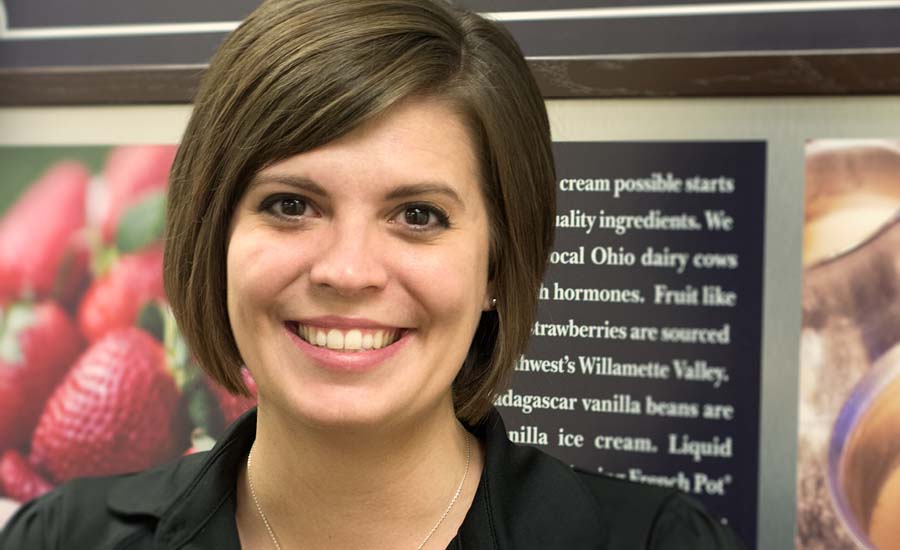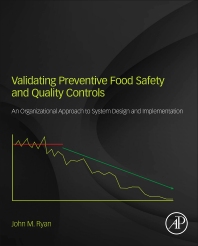3 ways leading food brands can increase food safety standards

While food safety, particularly in the ice cream category, has become a topic of interest among both consumers and industry players alike, the conversation in past years has oftentimes been spurred by unsavory events. However, with the intention of becoming proactive rather than reactive, today’s conscientious brands can maintain consumer trust and become ambassadors for food safety.
While listeria challenges every part of the food industry, increased consumer education and a growing awareness of this stubborn pathogen has brought it to the forefront of the ice cream category. By incorporating best practices from brands that have made a public commitment to proactivity in the realm of food safety, companies can strive for similar excellence. Graeter’s Ice Cream, Cincinnati, minimizes the potential food crisis with three critical elements implemented into a strict food safety regimen:
A necessity: Segregate ingredients
It is simply not enough to rely on government inspections to ensure food safety. Like all similar food production facilities, vigilant plants like Graeter’s are monitored by the FDA to ensure regulatory compliance.
In walking through a plant that enlists such quality standards, one thing should be apparent—intricate attention to food safety protocols. In combatting against listeria and other pathogens, strict protocols must be observed. Submitting manufacturing employees to an intense training program promotes everything from proper hand washing techniques to hazardous analysis and critical control points (HACCP) training.
Additional precautions must also be taken with allergens, including peanut, tree nut and gluten allergens, to avoid cross contact. Allergen-specific washouts, dedicated ingredient storage and labeling and regular swabbing of product surfaces for allergenic proteins should be well incorporated into the food safety plan.
In short, a strong food safety plan rests, in part, on the concept of segregation among ingredients. A strict supplier control program must be in place, requiring all ingredients to meet or exceed the established requirements. All ingredients are analyzed to ensure that the associated risks are mitigated. Ultimately narrowing the risk for bacteria, this practice allows food manufacturers to highlight the purity and quality of their ingredients.
Go above and beyond: Test for pathogens
In monitoring food safety, those who are most invested know that compromising is not an option. Many of today’s craft brands rely on specific and oftentimes unique production processes that ensure the quality of their craft products. Albeit, these unique production processes require unique food safety protocols to keep in line the highest of standards.
Consistent with Graeter’s overall commitment to small batch, handcrafted ice cream, the brand’s own food safety process is just as exclusive as its production process. To eliminate the opportunity for pathogens to enter the plant, Graeter’s manufacturing team must go above and beyond the traditional food brand’s common food safety practices. In an uncommon level of monitoring, each step in each process is thoroughly evaluated for the possible risks. In addition to a robust environmental monitoring program, Graeter’s implemented a thorough test-and-hold procedure, which requires finished product pathogen analysis. While additional risk can burden brands that rely on such diverse production processes, proactivity is inevitably the strongest way to combat cross contamination.
Support your commitment to food safety: Enlist a strategic work flow
While internal audits, environmental monitoring and bacterial analysis of products and components may be conducted, a strategic workflow must also be put in place.
Due to the fact that bacteria are found naturally in the environment, it is critical to design your environmental monitoring program in a manner that seeks to identify the bacteria and niches, so that it can be eliminated, actively protecting the manufacturing environment. The transportation of pathogens into a clean and safe food environment can most often be found on any transient items to include personnel, mobile equipment and even ingredients. In reducing the risk of bacteria contaminating a clean environment, food industry leaders must take bold actions. In carefully considering the traffic and process flow within their plants, risk is exponentially diminished.
In monitoring the safety of ingredients that enter the plant, Graeter’s also holds the suppliers it sources accountable for only the best ingredients. A substantial amount of environmental swabs are taken on a weekly basis to ensure that all food production areas are rigorously monitored for pathogens. As an SQF Level 3 plant, such monitoring must be continuous to protect against outside pathogens. This level of support is critical in supporting the food safety protocols already in practice.
An effort that pays dividends
Most are already familiar with the unique French pot process Graeter’s uses to handcraft its ice cream. What many are unaware of is that this same precision is used to ensure the brand consistently produces a safe product. The industry’s most dedicated companies are following suit, calling upon food safety teams to create environments and protocols that do just that.
Food safety is much more than a science; it is a passion. It requires just as much heart as handcrafting the product itself. At a time when consumer awareness has piqued, the food industry must redefine the role and definition of food safety. The cost of doing business today is a food safety system that ultimately rises above industry standards. With this in mind, the frozen food category as a whole can once again re-gain the trust of its consumers and tactfully avoid crisis.
Looking for a reprint of this article?
From high-res PDFs to custom plaques, order your copy today!








